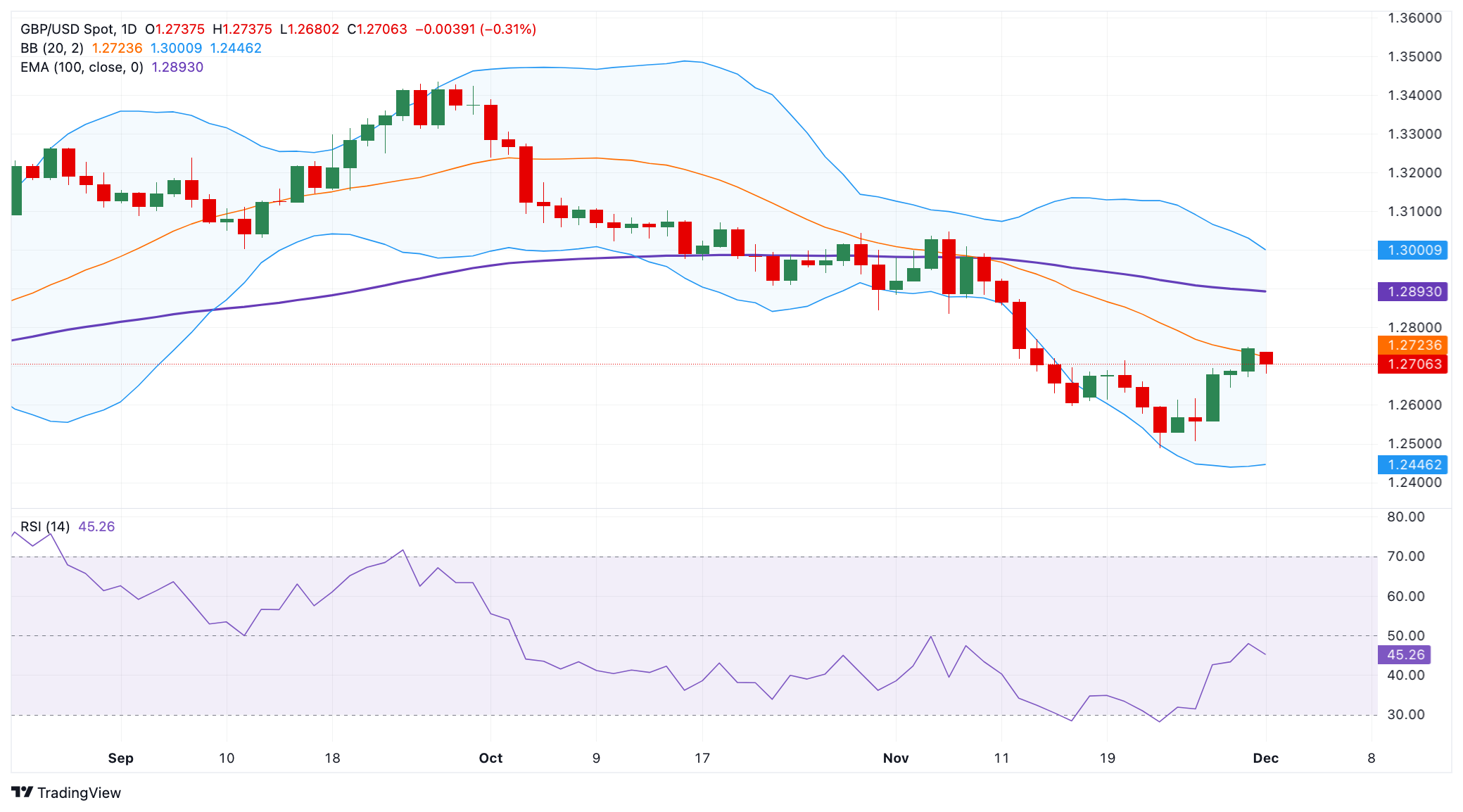- GBP/USD is trading in negative territory around 1.2700 in the early stages of the European session on Monday.
- The pair’s negative outlook remains intact below the 100-day EMA, with a bearish RSI indicator.
- The first bearish target to watch is the psychological level of 1.2600; The immediate resistance level is seen at 1.2834.
The GBP/USD pair falls near 1.2700 during the early hours of the European session on Monday, pressured by the firmness of the US Dollar (USD) in general. US President-elect Donald Trump’s tariff threats, rising geopolitical tensions in West Asia and growing expectations of less aggressive Fed rate cuts support the Dollar and act as a headwind for the GBP/ USD. The release of US ISM Manufacturing Purchasing Managers’ Index (PMI) data will be the highlight of Monday.
Technically, the negative view on GBP/USD prevails, with the price holding below the key 100-day EMA on the daily chart. The main pair’s bearish momentum is reinforced by the 14-day Relative Strength Index (RSI), which is below the midline around 44.40.
The initial support level for GBP/USD emerges at the psychological level of 1.2600. Sustained bearish momentum could drag the main pair to the lower boundary of the Bollinger Band at 1.2445. A break below this level could push prices lower towards 1.2331, the April 23 low.
On the positive side, the first barrier to the upside lies at 1.2834, the November 6 low. Extended gains above this level could pave the way for a test of the 1.2890-1.2900 zone, which represents the round mark and the 100-day EMA. The psychological level and the upper limit of the Bollinger Band of 1.3000 seem to be a tough nut to crack for the bulls.
GBP/USD daily chart
The British Pound FAQs
The British Pound (GBP) is the oldest currency in the world (AD 886) and the official currency of the United Kingdom. It is the fourth most traded foreign exchange (FX) unit in the world, accounting for 12% of all transactions, averaging $630 billion a day, according to 2022 data. Its key trading pairs are GBP/ USD, which represents 11% of FX, GBP/JPY (3%) and EUR/GBP (2%). The British Pound is issued by the Bank of England (BoE).
The most important factor influencing the value of the Pound Sterling is the monetary policy decided by the Bank of England. The Bank of England bases its decisions on whether it has achieved its main objective of “price stability” – a constant inflation rate of around 2%. Its main tool to achieve this is the adjustment of interest rates. When inflation is too high, the Bank of England will try to control it by raising interest rates, making it more expensive for people and businesses to access credit. This is generally positive for sterling, as higher interest rates make the UK a more attractive place for global investors to invest their money. When inflation falls too much it is a sign that economic growth is slowing. In this scenario, the Bank of England will consider lowering interest rates to make credit cheaper, so that companies will take on more debt to invest in projects that generate growth.
The data released measures the health of the economy and may affect the value of the pound. Indicators such as GDP, manufacturing and services PMIs and employment can influence the direction of the Pound.
Another important piece of information that is published and affects the British Pound is the trade balance. This indicator measures the difference between what a country earns from its exports and what it spends on imports during a given period. If a country produces highly in-demand export products, its currency will benefit exclusively from the additional demand created by foreign buyers seeking to purchase those goods. Therefore, a positive net trade balance strengthens a currency and vice versa in the case of a negative balance.
Source: Fx Street
I am Joshua Winder, a senior-level journalist and editor at World Stock Market. I specialize in covering news related to the stock market and economic trends. With more than 8 years of experience in this field, I have become an expert in financial reporting.








